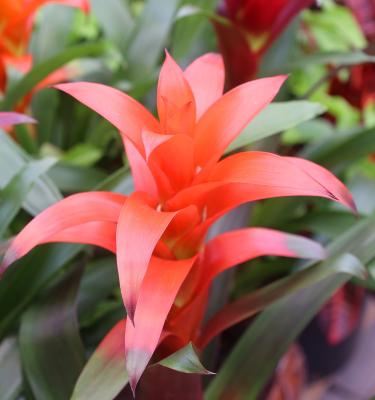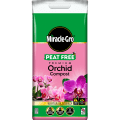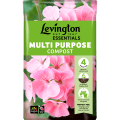

How to grow and care for bromeliads
Bromeliads (Bromeliaceae) bring a touch of the tropics to any space with their striking colours and unique forms. With over 3,000 species, there’s a bromeliad plant for every UK home.
Bromeliads are epiphytes, meaning they naturally grow without soil, using their roots to cling to tree branches or rocky surfaces. However, they adapt well to shallow, free-draining soil or container cultivation. Some prefer shade, while others thrive in sunny spots. Despite their tropical appearance, many bromeliad plants can thrive in the UK with the right care, and the good news for pet owners is that bromeliads are not toxic to cats or dogs.
Top 5 bromeliad care tips
- Choose a bromeliad suited to your climate and light conditions—some prefer bright spots, while others thrive in shade.
- Depending on the species, grow bromeliads without soil or plant them in shallow, well-draining soil.
- Water mainly through their central "well" or whorl of leaves, as this is where they absorb most moisture.
- Grow bromeliads as indoor plants or place them outside in pots in summer. Some may even survive outside all year in areas with very mild winters.
- For potting, use a 50/50 mix of orchid and multipurpose composts for the best results.
Shopping list
- A bromeliad suited to your space
- Free-draining soil or potting mix (use a multipurpose and orchid mix for pots)
- Fertiliser for houseplants or general-purpose use
- A pot with drainage holes or unsealed terracotta planter
- Insect spray for pest control
Bromeliad plant types
_0.jpg)
With such a wide range of bromeliads available, it’s easy to find one that suits your garden or home. Some of the most popular and easy-to-grow species include:
- Aechmea spp. (Urn Plants): Recognised by the urn-like well at their centres and their spear-shaped flowers, these bromeliads are both decorative and low-maintenance.
- Alcantarea imperialis (Imperial Bromeliad): A large, striking variety with leaves that can reach up to 1.5 metres in length. Its flower spikes grow up to 2.5 metres tall, making it a stunning focal point.
- Billbergia nutans (Queen’s Tears): Known for its unusual hanging flowers in pink, green, and blue hues.
- Guzmania lingulata (Vase Plant): A beginner-friendly bromeliad that’s easy to grow and highly ornamental.
- Tillandsia spp. (Air Plants): These bromeliads don’t need soil to grow and can be mounted on boards, placed on shelves, or wired onto screens.
- Vriesea splendens (Flaming Sword): Features horizontal stripes on its leaves and a unique flat red flower spike.
- Wallisia cyanea (Pink Quill): A cool-tolerant species ideal for the UK. It produces violet-blue flowers and a vivid pink flower spike.
Always check plant labels to ensure the species matches your specific climate and growing conditions.
Growing bromeliads outdoors
Bromeliads are tender plants and can’t cope with frost, so they won’t survive winters outdoors in most parts of the UK. However, they can be grown outside in pots in the summer and moved indoors in winter. A few varieties such as Billbergia nutans (Queen’s tears plant) and Fascicularia bicolor (crimson bromeliad) may even survive outside all year round in sheltered gardens in areas with very mild winters.
If you want to try growing bromeliads outdoors, choose a spot with filtered sunlight or partial shade and very free-draining soil. If your soil is heavy or prone to waterlogging, plant bromeliads on raised mounds, in pots, or in rockeries for better drainage.
Dig a hole the same depth as the nursery pot and slightly wider. After removing the bromeliad from its pot, plant it so that it is at the same level in the ground as it was in its pot – it’s essential not to plant it too deep. Backfill with soil and water thoroughly, ensuring the central well is also filled with water.
Fertilise sparingly in spring using a slow-release granular fertiliser. Do not over-feed as this can harm or even kill your bromeliad.
Bromeliad plant care
Bromeliads thrive in a humid environment with good airflow. Proper watering and feeding are essential for maintaining their vibrant colours and healthy growth.
- Watering: To water a bromeliad, keep the central well (if present) filled with water and ensure the surrounding soil is slightly moist but never waterlogged. During dry or hot weather, mist outdoor bromeliads with a garden hose. For indoor plants, mist regularly using a spray bottle. Use rainwater rather than tap water where possible, or leave containers of tap water to stand for 24 hours before using to allow some of the chemicals in the water to disperse.
- Humidity: Increase humidity around indoor bromeliads by grouping them with other plants or placing the pot on a saucer filled with pebbles and water. As the water evaporates, it creates a more humid microclimate.
- Feeding potted bromeliads: For bromeliads with a central well, add a balanced or low-nitrogen liquid feed to the well once a month in spring and summer, diluted to half strength. For bromeliads without a well, mist monthly in spring and summer with a foliar feed.
- Feeding garden bromeliads: In spring, scatter controlled-release fertiliser around the root zone to encourage steady growth.
To keep your bromeliad looking its best, remove any dead or damaged leaves and gently clean the fronds to remove dust. For outdoor plants, a light hose spray works well.
Bromeliad propagation
_0.jpg)
Bromeliads live for 2-5 years, and usually only flower once, with the flowers lasting for several months. The mother bromeliad plant will die back after flowering, but luckily bromeliads tend to produce new offshoots (called bromeliad pups) and are easy to propagate from these.
The best time to propagate bromeliads is in spring. To propagate a bromeliad from a pup, wait until the pup is around one-third the size of the mother plant, then cut or pull it off the mother plant as close to the main stem as possible. Plant each pup in a pot filled with a 50/50 mix of orchid and multipurpose composts, burying just enough of the stem to make the plant stable without covering up the leaves. Water the pot and place it in a warm bright place to allow it to produce roots and grow on. Bromeliad pups can take 2-3 years to grow into mature plants.
Bromeliads can live for several months after flowering, so there is plenty of time for you to propagate new plants from the bromeliad pups! To remove a dead bromeliad flower and keep the plant looking tidy, simply cut the flower off the plant as low down the flower stem as possible.
Pests and diseases
Bromeliads are generally hardy, but they can face some challenges:
- Rotting at the base: Overwatering, poor drainage, or insufficient airflow can lead to rot. Ensure bromeliads are planted in free-draining soil and spaced apart to allow for proper air circulation.
- Pests: Aphids and scale insects may occasionally appear, especially on new growth. Treat infestations promptly with an insect spray.
Take care of your bromeliad and it will reward you with vibrant foliage and striking flowers to brighten up your home!




